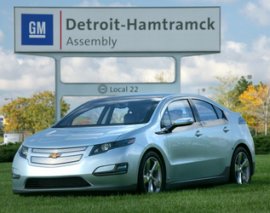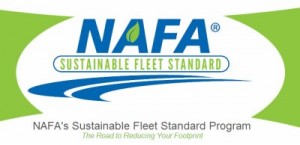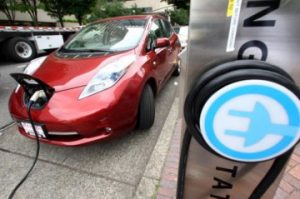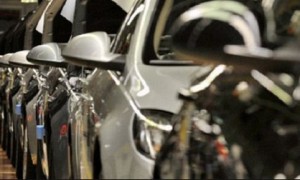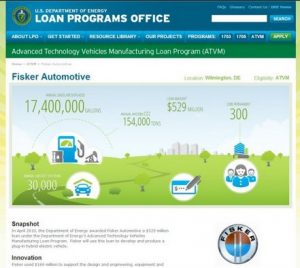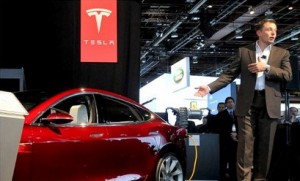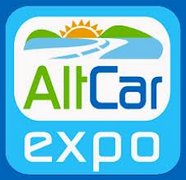by Jon LeSage, editor and publisher, Green Auto Market
Here’s my take on the 10 most significant and interesting occurrences during the past week…….
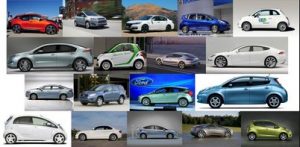 Nissan Leaf continues to lead the pack. Electric vehicle sales saw a little bit of softening in September after two months of strong numbers – falling short of the recent 10,000 per month mark with 9,340 units sold last month. That was 15% greater than one year earlier; for the year, 88,149 units have been sold – a 30% gain over the first nine months of 2013. The Nissan Leaf continues to steam along, reaching its 19th consecutive month of year-over-year increases. Hitting 2,881 units sold last month was nearly a 50% gain over last year’s 1,953. The Chevy Volt didn’t do as well – hitting 1,394, its lowest sales number since February and down from September 2013’s 1,766. The new 2016 Volt will be rolled out at the Detroit Auto Show in January, and current sales are expected to remain down for 2014 and 2015 models. The Tesla Model S isn’t reported but was expected to sell about 1,300 last month. Right behind the Model S is the BMW i3, which sold 1,022 last month – its second month over 1,000 sold. The company expects to roll out a higher share of i electric and plug-in hybrid models in the US in coming months. Tesla has raised interest with CEO Elon Musk’s recent tweet about unveiling its mysterious Model D on Oct. 9. Tesla also gained interest in its used car remarketing strategy in an Automotive News feature article. Tesla is developing a certified pre-owned (CPO) vehicle program for its off-lease Model S units. That should make it more competitive with pre-owned luxury models from BMW and Mercedes-Benz, the company said.
Nissan Leaf continues to lead the pack. Electric vehicle sales saw a little bit of softening in September after two months of strong numbers – falling short of the recent 10,000 per month mark with 9,340 units sold last month. That was 15% greater than one year earlier; for the year, 88,149 units have been sold – a 30% gain over the first nine months of 2013. The Nissan Leaf continues to steam along, reaching its 19th consecutive month of year-over-year increases. Hitting 2,881 units sold last month was nearly a 50% gain over last year’s 1,953. The Chevy Volt didn’t do as well – hitting 1,394, its lowest sales number since February and down from September 2013’s 1,766. The new 2016 Volt will be rolled out at the Detroit Auto Show in January, and current sales are expected to remain down for 2014 and 2015 models. The Tesla Model S isn’t reported but was expected to sell about 1,300 last month. Right behind the Model S is the BMW i3, which sold 1,022 last month – its second month over 1,000 sold. The company expects to roll out a higher share of i electric and plug-in hybrid models in the US in coming months. Tesla has raised interest with CEO Elon Musk’s recent tweet about unveiling its mysterious Model D on Oct. 9. Tesla also gained interest in its used car remarketing strategy in an Automotive News feature article. Tesla is developing a certified pre-owned (CPO) vehicle program for its off-lease Model S units. That should make it more competitive with pre-owned luxury models from BMW and Mercedes-Benz, the company said.- EVs will play a larger role at ACT Expo. Alternative Clean Transportation (ACT) Expo and Electric Drive Transportation Association (EDTA) have formed a new event partnership for 2015 ACT Expo, taking place May 4-7 in Dallas. The partnership signals a renewed focus on the rise of electric vehicles; it’s one more significant step that event manager Gladstein Neandross & Associates (GNA) has taken to expand the fuels and technologies being embraced by the clean transportation community.
- RFS gets an impressive list of supporters. A group of 33 state governors is asking the US Environmental Protection Agency to increase blending mandates for its soon-to-be-announced ruling on Renewable Fuel Standard volumes for biodiesel and cellulosic ethanol. The Governors’ Biofuels Coalition says that decreasing RFS volumes could hurt production of biofuels from waste products.
- Spiking gas prices is a scare tactic, UCS says. The Union of Concerned Scientists (UCS) says that the possibility of rising gas prices in California being warned by oil companies won’t take hold. With California’s cap-and-trade rule from AB 32 (California Global Warming Solutions Act) and the Low Carbon Fuel Standard coming from that legislation, oil companies are saying that with their increasing state taxes, they’ll have to pass that on to gas station pumps. A new report by UCS states that concerns about rising gas prices are overblown; the group thinks that any increases in transportation costs will be offset by savings from decreased oil consumption.
- What happened at Paris Motor Show? Green Car Reports traveled overseas for the opening of the famous auto show. Here’s their list of impressive debuts…… Citroen C4 CactusAIRFLOW concept car…… 2016 Ford C-Max……… Infiniti Q80 Inspiration concept….. 2017 Jaguar XE diesel…….. 2016 Mitsubishi Outlander Plug-In Hybrid…….. Renault Eolab concept…….. Volkswagen Passat GTE Plug-In Hybrid and Volkswagen XL Sport.
- USDA investing $91M in biofuel plant. Secretary Tom Vilsack said that the US Department of Agriculture is offering a $91 million loan guarantee to help finance an innovative advanced biofuel plant in Rapides Parish, La, with the Cool Planet corporation. The Cool Planet facilities will produce about eight to 10 million gallons of reformate per year at full capacity. Often referred to as a “drop-in” fuel, reformate is an ingredient in gasoline and jet fuel that can be added during the regular refinery process.
- Full-size Transit van on propane. Roush CleanTech will be offering a propane-powered Ford Transit full-size van to fleets by the middle of 2016. The Transit is in development now with Roush, and will be certified under Ford’s Qualified Vehicle Modifier (QVM) program. For the latest on the benefits of bringing propane autogas into a fleet, see a recent Q&A article by Michael Taylor, director of propane autogas business development at Propane Education & Research Council.
- Lamborghini enters EV space. Lamborghini announced at the Paris Motor Show it will roll out its first-ever plug-in hybrid vehicle. The Asterion LPI 910-4 concept car has a V-10 aspirated engine and three electric motors. The company said the Asterion can get 30 miles to the gallon on the lithium electric battery alone.
- Green Across America Trip #2. The compressed natural gas (CNG)-powered Honda Civic road trip across the country that started in 2012 by Evelynn Corbitt and Curtis Martin, national chairman for Green Across America, will make its run this month in coordination with Alternative Fuel Vehicle Odyssey Day 2014. There will be scheduled stops in Lynden, Renton, Portland, Lebanon, Eugene, Medford, Saratoga, Paso Robles, Santa Maria, Los Angeles, Long Beach, and San Diego. The road trip will be supported by Clean Cities coalitions in Washington, Oregon, and California, the National Alternative Fuels Training Consortium (NAFTC), and CNGChat.com.
- More propane conversion centers in Alliance AutoGas. Alliance AutoGas now has 100 member companies in its network with Virginia-based Better Fuels and Oklahoma-based CNG Interstate. CNG Interstate has traditionally specialized in compressed natural gas conversions for light- and medium-duty fleet vehicles and has become active in the propane autogas space.

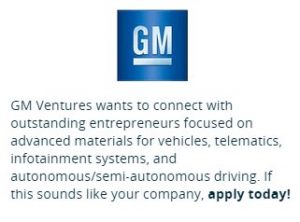 way i3 works
way i3 works